How to Drive Organic Traffic to Your Affiliate Links Using Long-Tail Keywords

Driving organic traffic to your affiliate links might sound tricky since it’s always the hardest part of affiliate marketing, but it doesn’t have to be! One of the easiest and most effective ways to do this is by using long-tail keywords.
These are the specific phrases people search for when they’re looking for something online. By focusing on these keywords, you can attract the right audience, boost your visibility, and get more clicks on your affiliate links.
Long-tail keywords are 2 to 5 words long. They might not get as many searches, but they bring the right people to your site. According to Moz, they make up 70% of all searches worldwide. This means they’re more specific, helping your content rank better on search engines.
Using these keywords also helps you stand out from big brands. It lets you build trust and authority in your niche.
Driving organic traffic to your affiliate links with long-tail keywords is a long-term effort. By picking the right phrases and creating great content, you can unlock your affiliate marketing potential.
Key Takeaways
- Long-tail keywords have lower search volume but are essential for attracting relevant traffic.
- They account for 70% of the total search volume globally.
- Using specific keywords can secure higher SERP rankings and improve conversions.
- Long-tail keywords help avoid competition with bigger brands.
- Tools like Ubersuggest and Google Keyword Planner are invaluable for keyword research.
- Effective content marketing with targeted keywords can differentiate your site.
- Engaging in SEO tactics can build authority and trust within your niche.
Understanding Long-Tail Keywords and Their Importance
Long-tail keywords are key in digital marketing. They are specific phrases with 2-5 words. Even though they have lower search volumes, they’re great for targeting specific niches. Using long-tail keywords boosts organic search traffic, bringing in more qualified leads.
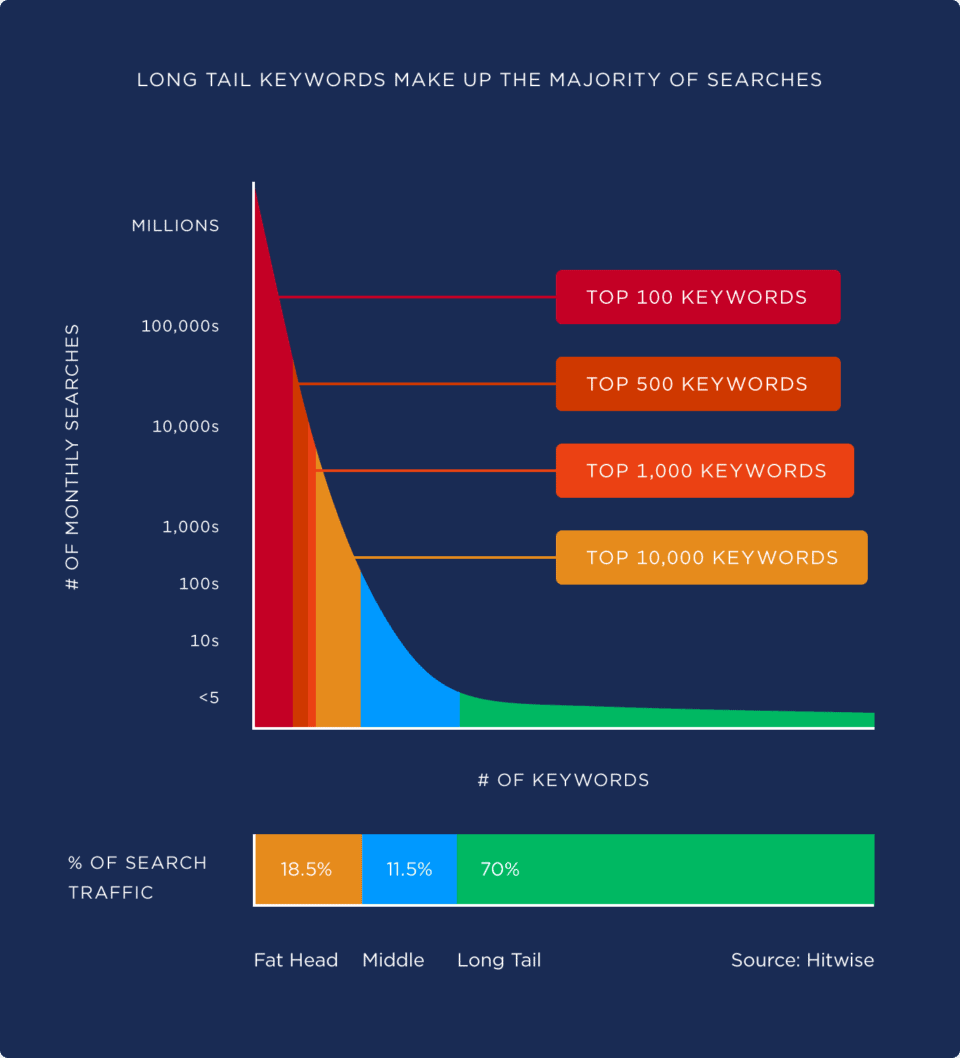
Definition of Long-Tail Keywords
In a very simple explanation, long-tail keywords are detailed phrases users search for. For example, “buy black designer shoes for men” instead of just “shoes.” They help attract a niche audience ready to buy. According to SE Ranking, almost 44% of keywords have three or more words, showing their growing popularity.
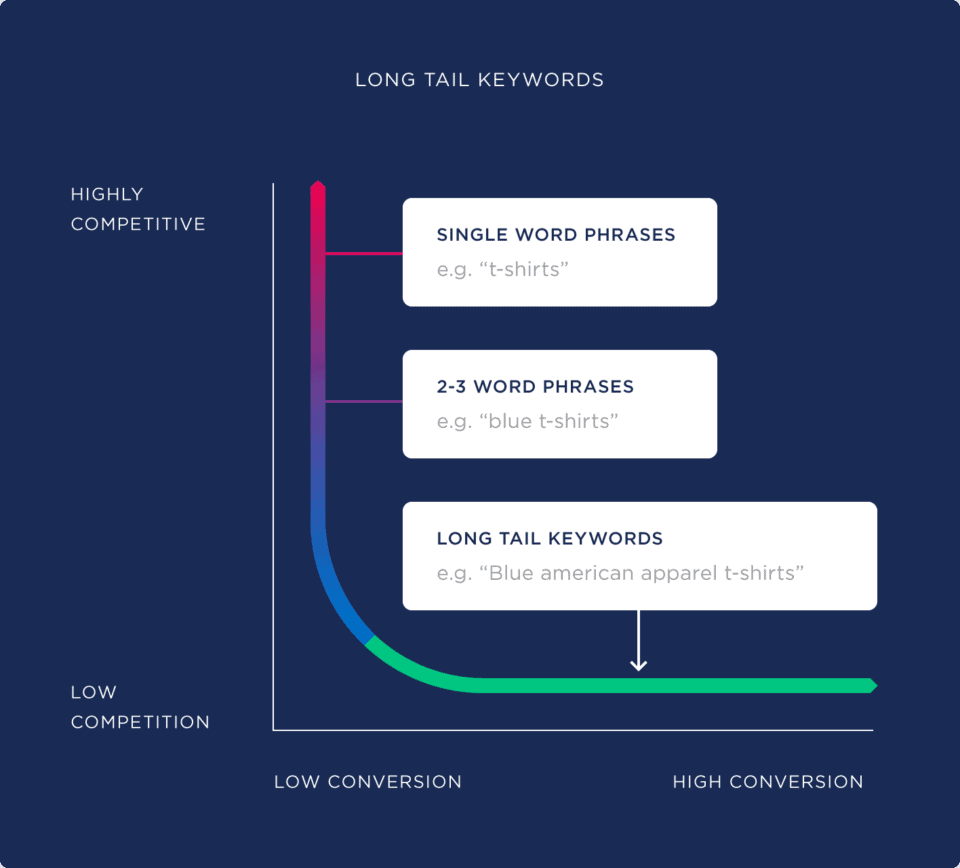
Benefits of Long-Tail Keywords in Affiliate Marketing
Long-tail keywords offer big benefits in affiliate marketing. They have less competition, making it easier to rank on search engines. For instance, “shoes” gets over 3.3 billion results, but “buy black designer shoes for men” gets 125 million results, offering more visibility.


Most search queries in the U.S. have fewer than 10 searches monthly. This means most traffic comes from specific, lower-volume keywords.
Long-tail keywords match user intent well, targeting those ready to buy. By addressing similar search queries, we create content for various users. Even though each keyword may not get a lot of traffic, together they can significantly increase organic search traffic.
| Keyword Type | Search Volume | Competition Level | Conversion Potential |
|---|---|---|---|
| Short-Tail Keywords | High | High | Low |
| Long-Tail Keywords | Low | Low | High |
Using long-tail keywords in your strategy helps target your audience better. It lets you create content that meets their specific needs and interests.
How Long-Tail Keywords Improve Search Engine Ranking
Long-tail keywords are great for boosting your search engine ranking. They match what users are looking for, making your content more relevant. This helps you reach a specific audience with less competition.
Lower Competition, Higher Visibility
Long-tail keywords are longer, with three or more words. They’re different from the broad keywords that many sites use. This means your site has a better chance of ranking well, even if it’s new.
Using specific terms like “lightweight laptops for college students” attracts the right audience. This can increase the chances of people clicking on your affiliate links.
Alignment with User Intent
Using long-tail keywords makes your content more relevant to users. It attracts people who are ready to buy. This can lead to more engagement and higher conversion rates.
For example, keywords like “gluten-free recipes for beginners” meet users’ specific needs. This ensures they find what they’re looking for. By focusing on user needs, you build stronger connections with your audience.
| Aspect | Long-Tail Keywords | Broad Keywords |
|---|---|---|
| Competition Level | Lower | Higher |
| Search Query Length | Three or more words | One or two words |
| Target Audience | Niche | General |
| Conversion Potential | Higher due to specificity | Lower as broader |
By using long-tail keywords wisely, you improve your search ranking and engage your audience better.
Drive Organic Traffic to Your Affiliate Links Using Long-Tail Keywords
Finding the right long-tail keywords is key to getting more eyes on your affiliate links. These specific phrases help your content match what people are looking for. This makes it more likely for them to take action.
Identifying High-Intent Keywords
To spot high-intent keywords, look at what people search for online. Tools like Google Keyword Planner and SEMrush help with this. Long-tail keywords are easier to rank for, which means more people will see your links.
Keywords that show someone is ready to buy are very important. They lead to more engagement and sales. This lets you create content that truly meets user needs.
Understanding User Search Behavior
Knowing how people search online is crucial for your marketing. Most users click on the first page of the results. By using the right long-tail keywords, you can get your content higher up in search results.
Targeted content brings in the right kind of visitors. This not only keeps them interested but also lowers the chance of them leaving quickly. Matching your keywords with your products is key. This helps you create titles that grab attention and boost click-through rates.
Researching Long-Tail Keywords Effectively
To make great content, it’s key to know how to find long-tail keywords. This helps in making your affiliate marketing SEO better. By using the right tools and strategies, you can find long-tail keywords that match what your audience wants.
Tools for Long-Tail Keyword Research
There are many tools to help find the right long-tail keywords. Here are some top picks:
- Google Keyword Planner: A free tool that shows keyword volume and competition.
- SEMrush: A powerful tool that gives detailed insights on keyword difficulty and related keywords.
- Answer The Public: This tool shows questions and phrases people search for, helping with content ideas.
- Ahrefs: A favorite among SEO experts, it helps explore keyword opportunities and track performance.
Long-tail keywords make up about 92% of all searches, thanks to voice search. They have less competition than short-tail keywords, making it easier to rank higher in search results.
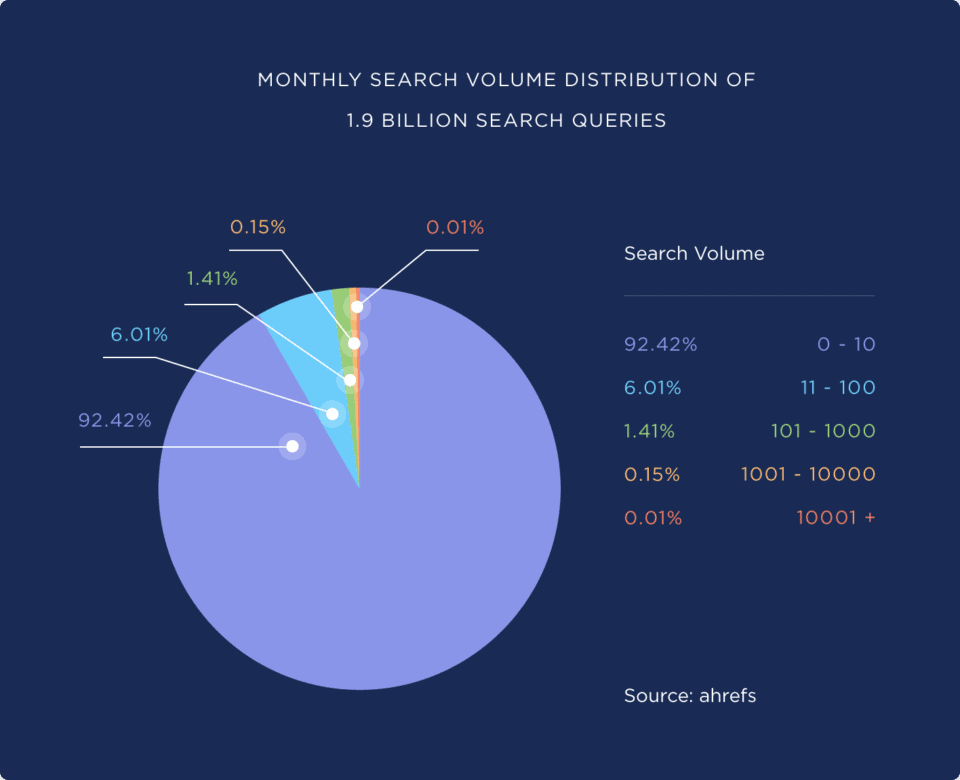
Utilizing Google Auto-suggestions and Related Searches
Google’s auto-suggestions and related searches are a goldmine for insights. When you start typing in the search bar, Google suggests long-tail keywords. This is great for getting organic traffic because it shows what users want.

Suggestions of what people ask;
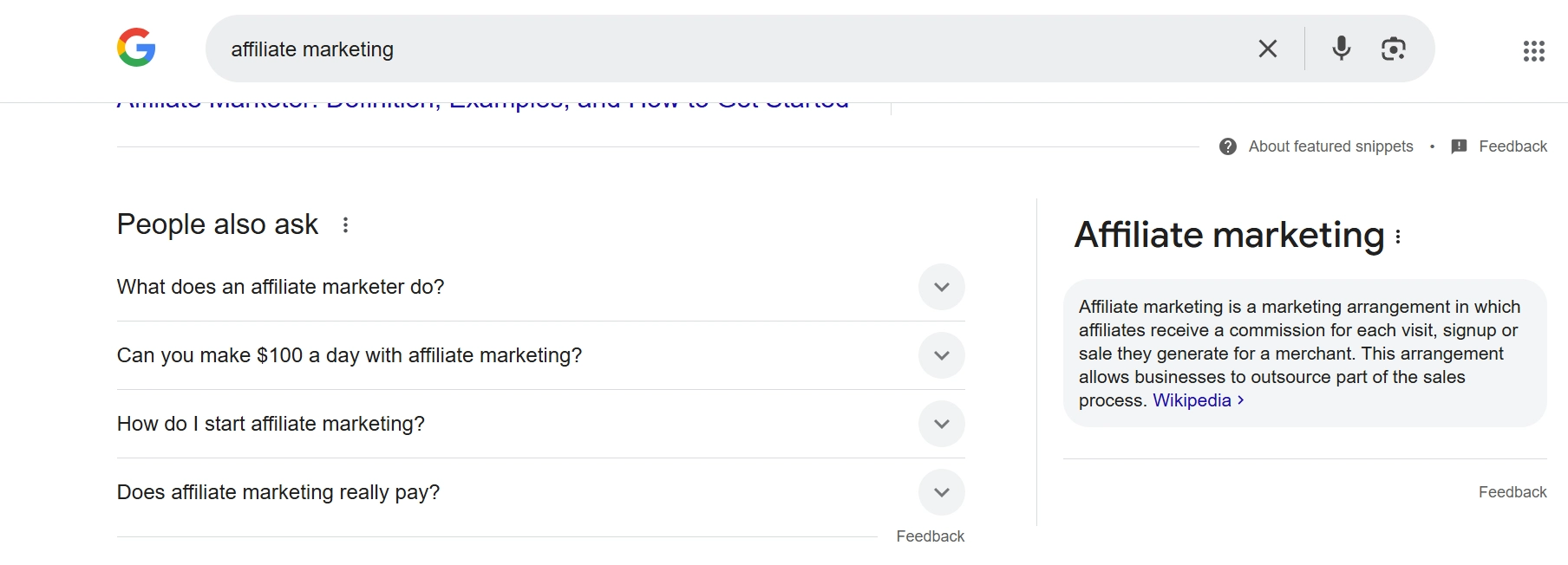
Suggestions of what people search for;
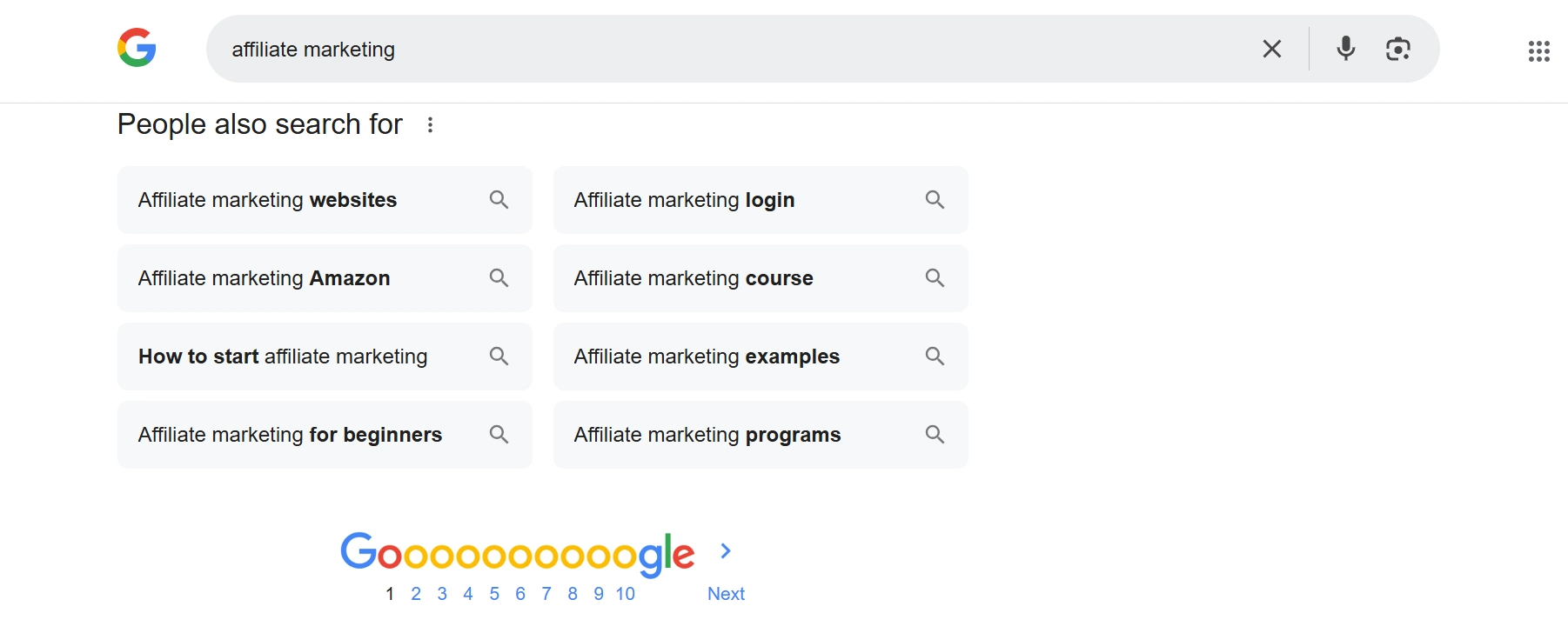
Using these insights can boost your conversion rates, with long-tail keywords converting at 36% on average. Since they make up the biggest part of search demand, they’re crucial for creating content for specific niches.
By using these strategies, you can improve your affiliate marketing. This will help you stand out in the competitive digital world.
Remember to check how your keywords are performing. This helps you adjust your strategies based on market changes and what users like.
Creating Quality Content Around Long-Tail Keywords
To drive organic traffic to your affiliate links, quality content is key. It must include long-tail keywords in a way that’s easy to read and fun to follow. This makes your content more relevant and meets the needs of your visitors.
Enhancing Content Relevance
Good content answers specific questions. Long-tail keywords attract visitors with specific needs, leading to better conversion rates. A study by Conductor shows long-tail keywords have 2.5x higher conversion rates than short-tail keywords.
Long-tail keywords also make up 70% of all searches. Using these specific phrases helps you connect with your audience better.
Using Keywords Naturally in Blog Posts
It’s important to use long-tail keywords naturally in your blog posts. For example, using “extra-wide women’s shoes for swollen feet” can help you stand out. This approach not only helps search engines but also gives readers useful information.
Tools like Ubersuggest, AnswerThePublic, and Google Autocomplete can help you find the right keyword.
Structuring Content with Header Tags
Using header tags makes your content easier to read and helps search engines understand it better. Optimizing meta tags, headings, and URLs with long-tail keywords makes your content more appealing.
Choosing the right long-tail keywords is crucial. Analyzing keyword difficulty and search volume helps you pick the best ones for your strategy. This approach ensures your content is both relevant and visible.
Optimizing Your Affiliate Links for Better Click-Through Rates
It’s important to make your affiliate links better for more engagement and sales. By creating appealing calls-to-action (CTAs) and smart link placement, you can get more clicks. Knowing how to connect with your audience is crucial for success in affiliate marketing.
Crafting Compelling Calls-to-Action

Strong CTAs grab your audience’s attention and push them to click. Good CTAs are clear, persuasive, and easy to follow. Here are some tips:
- Use action-oriented language that creates a sense of urgency.
- Make CTAs stand out with contrasting colors and bold fonts.
- Put CTAs near relevant content for better context.
Placing Affiliate Links Strategically
Where you put your affiliate links matters a lot. Here are some ways to improve:
- Put links in busy parts of your content, like the start or end.
- Use hyperlinks in engaging content to keep the flow.
- Try different places to see which gets the most clicks.
Using these methods can boost your affiliate link visibility and click-through rates. This leads to more sales and commissions. Diverse CTAs and smart link placement are key for better affiliate marketing. Also, knowing your audience well can help you get even better results.
Leveraging Social Media and Other Platforms to Boost Traffic

Social media is key in today’s world to get more people to visit your affiliate links. By sharing your content on different platforms, you can reach more people. This not only brings in more organic search traffic but also helps you get noticed by potential customers.
Getting involved in online communities and groups is also a smart move. It helps you build relationships that can lead to more website visits.
Share Your Content on Social Media
Using social media well can make your content reach more people. Here are some tips:
- Post often on the platforms where your audience hangs out.
- Use eye-catching visuals and interesting descriptions to grab attention.
- Use hashtags related to your niche to make your content easier to find.
- Encourage people to share and interact with your content to spread the word.
Engaging with Relevant Communities and Groups
Being part of online communities and groups helps you connect with people who share your interests. Here’s how to do it well:
- Find and join forums and groups that match your niche.
- Share your knowledge, answer questions, and offer insights.
- Use content from others to build trust and credibility with your brand.
- Share your content wisely, making sure it adds value first.
| Platform | Benefits | Best Practices |
|---|---|---|
| Large audience reach and targeted advertising | Utilize groups and paid ads for visibility | |
| Visual storytelling with higher engagement | Use high-quality images and stories | |
| Real-time updates and conversations | Engage in trending topics and use relevant hashtags | |
| Networking with professionals and B2B marketing | Share informative content and engage with industry leaders |
Using these strategies can really boost your affiliate marketing. It helps drive more interested traffic to your website.
Monitoring and Analyzing Your Keywords Performance
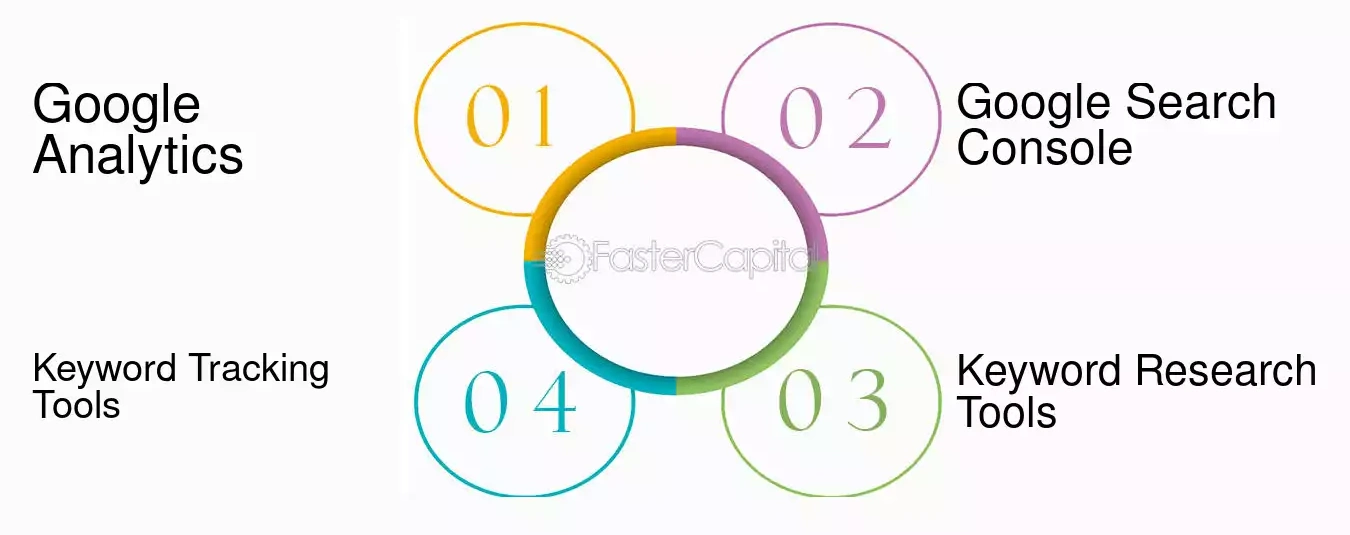
In the digital marketing world, it’s key to keep an eye on your targeted keywords. This helps boost your affiliate marketing success. Using strong analytics tools lets you see which long-tail keywords bring in traffic and sales.
Using Analytics Tools to Track Performance
Platforms like Google Analytics and SEMrush are great for tracking keyword performance. They show you important stats like click-through rates (CTR). This rate shows how many people click on your site from search results.
Google Keyword Planner helps you see how often people search for certain keywords. This lets you find popular keywords that lots of people are interested in. Tools like Rank Tracker by Senuto also help by analyzing your long-tail keywords’ performance.
Adjusting Your Strategy Based on Data Insights
To do well in affiliate marketing, you need to adjust your plans based on data. Looking at keyword difficulty scores helps you pick less competitive keywords. These keywords often have higher conversion rates, which is good for affiliate marketers.
By checking your keyword data often, you can make your content and marketing better. This way, you reach more people and do a better job of meeting their needs.
| Tool | Functionality | Key Insights Provided |
|---|---|---|
| Google Analytics | Tracks website traffic and performance | Click-through rates, user behavior |
| SEMrush | Competitor analysis and keyword research | Keyword difficulty, search volume |
| Google Keyword Planner | Keyword discovery and volume tracking | Search volumes, competition levels |
| Rank Tracker by Senuto | Keyword performance analysis | Keyword rankings over time |
Long-tail keywords are crucial for voice search optimization, offering unique opportunities to reach specific audiences.
Conclusion
Using long-tail keywords is key for affiliate marketers. These keywords are longer and more specific, making them easier to rank for. They help you attract the right people who are looking for what you offer.
Long-tail keywords are behind 70% of organic traffic. This means they bring in people who are ready to buy or take action. To succeed, you need to research and keep an eye on how well your keywords are doing. Tools like KWFinder can find the best keywords for your audience.
In short, a smart long-tail keyword strategy can boost your affiliate marketing. It helps you reach your goals and grow your income. Keep working on it, and your business will thrive online.
Frequently Asked Questions
What are long-tail keywords and why are they important for affiliate marketing?
Long-tail keywords are detailed search phrases with three or more words. They help affiliate marketers attract users who are ready to buy. This means more chances to make sales.
How do long-tail keywords improve search engine ranking?
Long-tail keywords have less competition, helping new sites rank better. They also match what users are looking for, leading to more engagement and sales.
What techniques can I use to identify high-intent long-tail keywords?
To find high-intent long-tail keywords, use tools like Google Keyword Planner or SEMrush. Also, look at what people search for and check auto-suggestions on search engines.
How can I optimize my content for long-tail keywords?
To optimize content, naturally include long-tail keywords. Focus on answering specific questions and keep your content easy to read. Use header tags to improve both user experience and SEO.
What role does social media play in driving traffic to affiliate links?
Social media is great for getting organic traffic. Share content with long-tail keywords and engage with your audience. This helps you reach more people and drive traffic to your affiliate links.
What is the significance of crafting compelling calls-to-action for affiliate links?
Creating effective calls-to-action (CTAs) is key to getting more clicks. Good CTAs speak to your audience’s needs, encouraging them to act. This drives more traffic and sales through your affiliate links.
How can I create quality content that incorporates long-tail keywords?
Creating quality content means using long-tail keywords naturally. It also means solving your audience’s problems or answering their questions. This makes your content more relevant and drives organic traffic to your affiliate links.







Comment:
Thank you for sharing this insightful post on driving organic traffic to affiliate links using long-tail keywords.
I appreciate the detailed explanation of long-tail keywords and their
importance in affiliate marketing.
The strategy of using long-tail keywords for better search engine ranking
and alignment with user intent is a game-changer. I particularly found the tips on identifying high-intent keywords and understanding user search behavior very
useful. I’ll definitely try out the suggested tools
for long-tail keyword research.
I also agree that creating quality content around long-tail keywords is crucial.
The emphasis on enhancing content relevance and using keywords
naturally in blog posts is a great reminder. I’ll keep these points in mind while structuring my content with header tags.
The section on optimizing affiliate links for better click-through rates was also very informative.
I’ll focus on crafting compelling calls-to-action and placing affiliate links strategically as suggested.
Lastly, the reminder to leverage social media and other platforms to boost traffic is a timely
one. I’ll make sure to share my content on relevant social media platforms and engage with communities and groups.
Thank you again for this valuable post. I’m looking forward to implementing these strategies in my affiliate marketing efforts.
Best regards,
Buddy
You’re welcome